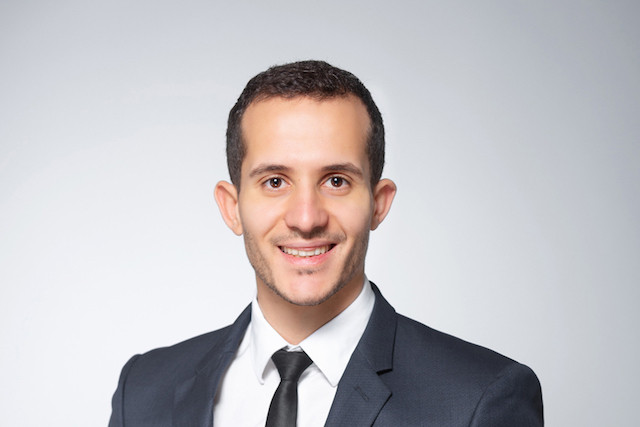Take-up in office space increased by 16% last year. Nearly a quarter of a million square metres was newly rented, the second highest amount on record. Vacancy rates (the percentage of empty rental property) have fallen substantially over the last couple of years, and are approaching record, pre-crisis levels. This is because national employment has been increasing by 3.3% per year on average over the last five years, being closer to 4% recently.
Demand up, rents up
Much of recent growth in Luxembourg has been driven by the need to boost the value added by international head offices based here. This has led firms of all sizes to hire, and these people need somewhere to work. Moreover, in the battle to attract and retain this talented staff firms like to offer plush, well located offices.
Brexit plays a relatively small part of increased demand. Industry promotion agency Luxembourg for Finance recently predicted that uncertainties of the UK’s relationship with the EU are likely to create 3,000 new jobs over the 2016-2019 period in Luxembourg. This is a significant number, but only accounts for about 6% of the new jobs which will be created over this period.
Record rents are the result. The Central Business District has the highest prime rental valuations, reaching as much as €50 per square metre per month. This is around one third higher than the next most desired locations in the capital. CBD rent is up by quarter over the ten years to 2018, says the property firm JLL, and this compares to around 7% on the Kirchberg, 10% by the railway station, with rents broadly stable over this period in the Cloche d’Or.
Cloche d’Or: not yet
While planners see the Cloche d’Or as a new Kirchberg, Lotfi Behlouli, the director of JLL Luxembourg, said that interest in the district was relatively tepid at the moment, although he sees momentum building. “It is important to offer a good environment to employees, and make it easy for them to commute,” he said. However at the moment the area is something of a hard sell as it is largely a building site, with facilities and transport links lacking.
“Often it is difficult to imagine how the Cloche d’Or will look, but the opening of the shopping mall [in May of] this year should start to change perceptions,” he added. This new retail centre is set to be substantially bigger than the Kirchberg version. The tram to the station is scheduled to be connected by the end of 2022.
So while the Cloche d’Or is an attractive option for large players which can be somewhat self contained, it is less appealing for smaller firms. PwC has been there since 2014, and Deloitte and Alter Domus had their official openings earlier this year. Yet so far smaller operations have played safe, keeping themselves closer to the town centre, the Kirchberg or the station end of town. Alternatively there is an attraction for places slightly out of town with a better supply of parking spots, such as Strassen, Capellen and Leudelange. The latter has become a focus for the insurance industry, for example.
Big transactions tighten market
The biggest transactions last year, says Inowai, a property firm, were Deloitte’s 31,000m2 and Alter Domus’ 10,600m2 in the Cloche d’Or, followed by 10,073m2 for Amazon on the Kirchberg, 9,000m2 for Telindus in the Bourmicht estate (Bertrange), and 7,898m2 for Foyer in Leudelange. Business services accounted for a third of take-up, followed by banking and finance with a quarter, as well as public sector and ICT each with 14%.
Vacancy rates were at a post-crisis low of 3.6% last year, down from around 5% in 2016, according to Inowai. This national figure went from 2% in 2008 to 8.6% in 2009, after which it fell steadily to around 6% in 2016. It then dropped considerably. This masks considerable variations, with JLL saying vacancy rates in the fourth quarters 2016 and 2018 fell in the more established areas: from 5% to 1.75% in the CBD, on the Kirchberg from 3% to 1%, and in the station end of town from 4.5% to 2.5%. However, in the main emerging districts the rates increased from 7% to 8% in the Cloche d’Or and from 4% to 9% in Esch-Belval.
In the pipeline
Some major projects are set to come on stream this year. Royal-Hamilius will bring 10,000m2 of offices (all space has been rented), 12,000m2 of retail (16 shops plus restaurants), and 7,500m2 (73 appartments) of residential space to the centre of the capital. Meanwhile Infinity, opposite the Philharmonie on the Kirchberg, will have 6,800m2 of offices, 6,500m2 for retail, and 16,000m2 residential space. To this we can add Casa Ferrero with 29,000m2 and 17,338m2 for Naos.
In 2020, the biggest project will be the European Court of Justice on the Kirchberg (39,750m2), which in 2021-22 will be topped by ArcelorMittal’s plan for 55,000m2 in the same district. Post has plans for 27,700m2 around the central train station early next decade. Belval will see the Icône building (18,000m2) come on stream around this time too, designed by Foster + Partners.
Industry experts foresee continued growth in 2019, resulting in the sixth year in succession where take-up exceeds 200,000m2. Rents should stay broadly stable, although there could be some upward pressure in the centre and the Cloche d’Or.
